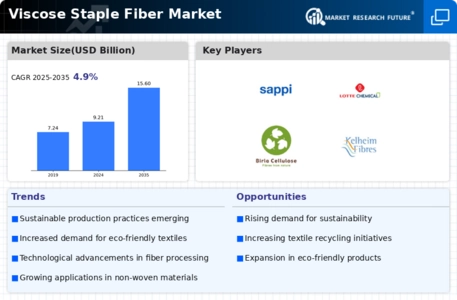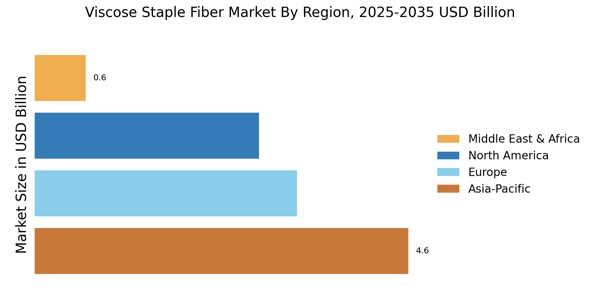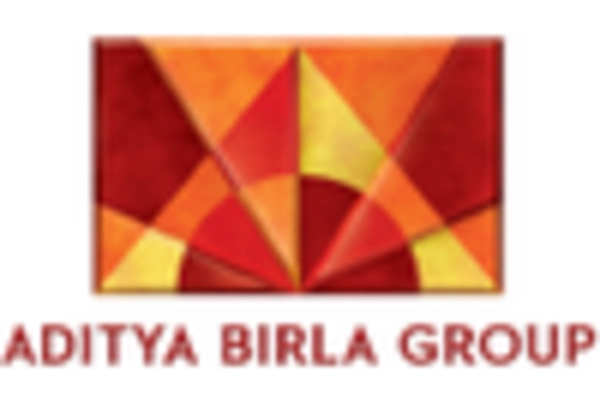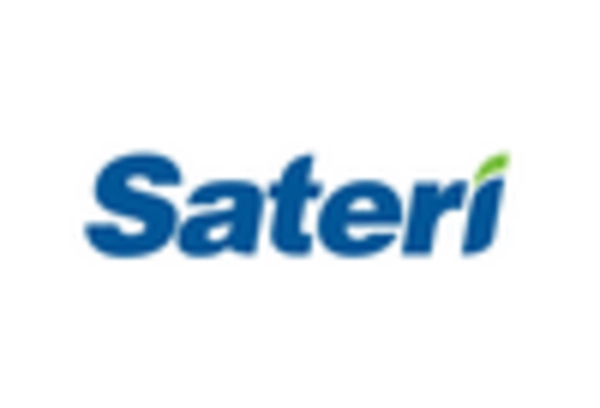Diverse Applications
The versatility of viscose staple fiber is a significant driver for the Viscose Staple Fiber Market. This fiber is utilized in a wide array of applications, ranging from apparel to home textiles and industrial products. In 2025, the demand for viscose in the fashion industry is expected to remain robust, as brands increasingly incorporate this fiber into their collections due to its softness and drape. Additionally, the use of viscose in non-woven applications, such as hygiene products and medical textiles, is on the rise, further diversifying its market presence. The ability of viscose staple fiber to blend well with other fibers enhances its appeal, allowing manufacturers to create innovative products that meet consumer preferences. This adaptability is likely to sustain the growth trajectory of the viscose staple fiber market.
Sustainability Initiatives
The increasing emphasis on sustainability within the textile industry appears to be a pivotal driver for the Viscose Staple Fiber Market. As consumers become more environmentally conscious, there is a growing demand for fibers that are biodegradable and produced from renewable resources. Viscose staple fiber, derived from wood pulp, aligns with these sustainability goals, making it an attractive option for manufacturers. In 2025, the market for sustainable textiles is projected to reach substantial figures, indicating a shift towards eco-friendly materials. This trend is likely to encourage more companies to invest in viscose production, thereby expanding the market. Furthermore, regulatory frameworks promoting sustainable practices may further bolster the demand for viscose staple fiber, as companies seek to comply with environmental standards.
Technological Advancements
Technological advancements in the production processes of viscose staple fiber are likely to play a crucial role in shaping the Viscose Staple Fiber Market. Innovations such as closed-loop production systems, which minimize waste and reduce environmental impact, are becoming increasingly prevalent. These advancements not only enhance the efficiency of fiber production but also improve the quality of the final product. In recent years, the introduction of new spinning technologies has enabled manufacturers to produce finer and stronger fibers, catering to diverse applications. As these technologies continue to evolve, they may lead to cost reductions and increased production capacities, thereby driving market growth. The integration of automation and digitalization in manufacturing processes could also streamline operations, making viscose staple fiber more competitive against synthetic alternatives.
Economic Growth in Emerging Markets
Economic growth in emerging markets is likely to serve as a catalyst for the Viscose Staple Fiber Market. As disposable incomes rise in these regions, there is an increasing demand for textiles and apparel, which in turn drives the need for viscose staple fiber. Countries experiencing rapid urbanization and industrialization are expected to witness a surge in textile consumption, particularly in the fashion and home textile sectors. In 2025, the textile market in several emerging economies is projected to expand, creating new opportunities for viscose manufacturers. This growth may encourage investments in production facilities and supply chains, further enhancing the market's capacity to meet rising demand. Additionally, the increasing presence of international brands in these markets could further stimulate the viscose staple fiber market, as they seek sustainable and high-quality materials for their products.
Rising Demand for Eco-Friendly Textiles
The rising demand for eco-friendly textiles is emerging as a key driver for the Viscose Staple Fiber Market. As consumers increasingly prioritize sustainable fashion, the demand for fibers that are both environmentally friendly and high-quality is surging. Viscose staple fiber, known for its biodegradable properties, is well-positioned to meet this demand. In 2025, the market for eco-friendly textiles is projected to grow significantly, with viscose playing a central role in this transformation. Brands are actively seeking to replace synthetic fibers with viscose to enhance their sustainability profiles. This shift not only aligns with consumer preferences but also addresses regulatory pressures for sustainable practices in the textile industry. Consequently, the viscose staple fiber market is likely to experience heightened interest and investment as companies adapt to these evolving consumer demands.


















Leave a Comment